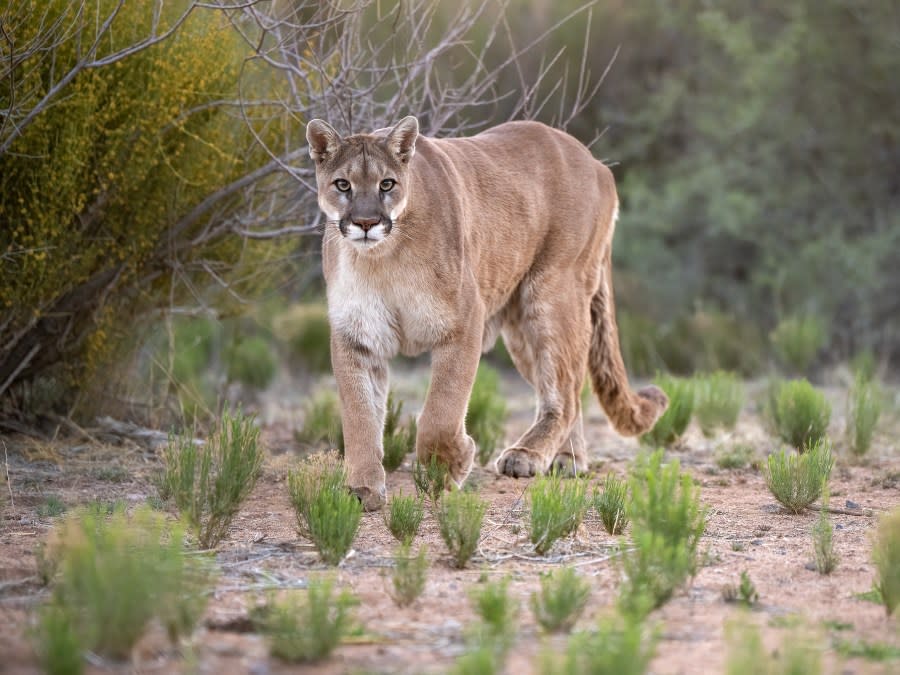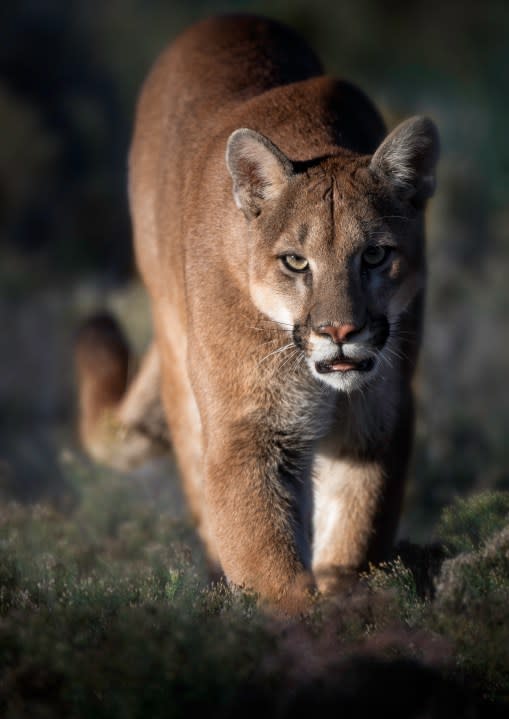What to do if you see a mountain lion in Kansas

TOPEKA (KSNT) – Seeing a mountain lion might rank as one of the scariest experiences you can have while enjoying the outdoors in Kansas.
Mountain lion, puma or cougar. No matter what you call them, seeing one in the wild is enough to set most people’s hearts racing. Sightings of these big cats has only increased in recent years thanks largely to “transients” moving through the Sunflower State from established populations in neighboring states.
For more than a century, mountain lions were thought to be completely removed from Kansas, according to the Kansas Department of Wildlife and Park’s (KDWP) website. A mountain lion killed in 1904 in Ellis County would be the last confirmed sighting until another was shot and killed in 2007 in Barber County.

How to coexist with the coyote next door
KDWP Biologist Matt Peek spoke with 27 News about the recent uptick in mountain lion sightings in Kansas last year. In a more recent interview, he said the cats are becoming a little more common in Kansas.
“We had 38 confirmations from 2007 to 2021 and it looks like we have had 34 confirmations in 2022 and 2023,” Peek said. “Almost as many in the last two years as in the previous fifteen years combined.”
While sightings have gone up, the animals are still considered rare for someone to spot. Peek said photographic evidence is a must in order to make any sighting official and to make sure the animal isn’t something similar like a bobcat.
Tips for Kansas morel mushroom hunting in 2024
“The odds of that happening [seeing a mountain lion] are pretty low but we do get some confirmations of mountain lions,” Peek said. “The first thing I would say, it’s a rare occurrence.”
Many of the confirmed sightings come courtesy of trail cameras presented to KDWP officials that help solidify whether a mountain lion was really in the area. Other evidence of mountain lion activity comes from finding things like tracks on the ground, a cached kill, droppings or fur.
Peek emphasized that people who think they might see a mountain lion should take precautions when trying to document them such as staying inside the safety of a vehicle.
“Alternatively, if you’re out on foot, the risk of any negative encounter is low,” Peek said. “However, they are a big carnivore. A person should not approach them or try to get closer to them on foot.”
Top big game records in Kansas for deer, elk and antelope
Peek said if you’re out hiking and find yourself in close proximity to a mountain lion, you should try to make yourself look as large as possible. This includes tactics like holding a jacket or shirt over your head and avoiding sitting or crouching down.
“If there are kids around, get them close to you.,” Peek said. “If one does approach you, make some noise and throw stuff at it. They can be deterred by that type of thing.”
The U.S. Fish and Wildlife Service (USFWS) also has a list of recommendations to follow if you encounter a mountain lion. These include:
Always be aware of your surroundings and act accordingly.
Make yourself appear larger by opening your coat and throwing stones and branches. Wave raised arms slowly. Speak slowly, firmly and loudly to discourage predatory behavior.
Don’t turn your back on a mountain lion.
Never run by or from a mountain lion as this could trigger their instinct to chase.
Pick up small children.
Never bend or crouch down as this makes you appear like a mountain lion’s prey.
Try to remain standing to protect your head and neck.
If attacked, fight back with whatever is at hand.
Never approach a mountain lion.
Look after children, especially outside between dusk and dawn.
Always hike, backpack and camp in the wild with a companion.
Don’t feed wildlife or leave food outside.
Keep pets secure and as roaming pets can become easy prey for mountain lions.
Steel weights found stuffed inside Kansas state record catch, KDWP says
Evidence of mountain lion activity in Kansas can be submitted to the KDWP by calling 620-342-0658 or by using this link. You are also encouraged to contact a KDWP game warden or call Operation Game Thief at 1-877-426-3843 if you see one of the big cats.
“They are, for the most part, pretty elusive,” Peek said. “Maybe that’s changed in the last ten to fifteen years as there are a lot more of them in suburban areas. The likelihood of seeing them is higher than it used to be. But, generally, you would consider them to be highly elusive. We have had people get photographs or video of them when they witness them… it’s not impossible for people to see them.”
For more Kansas Outdoors, click here. Keep up with the latest breaking news in northeast Kansas by downloading our mobile app and by signing up for our news email alerts. Sign up for our Storm Track Weather app by clicking here.
Follow Matthew Self on X (Twitter): https://twitter.com/MatthewLeoSelf
For the latest news, weather, sports, and streaming video, head to KSNT 27 News.

